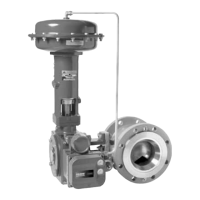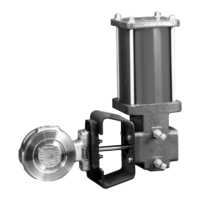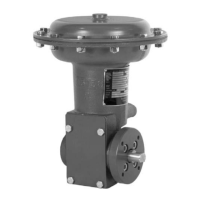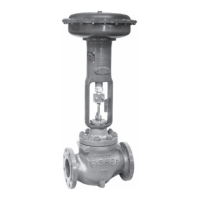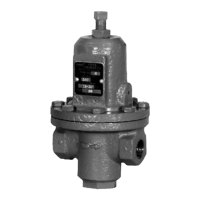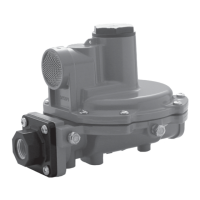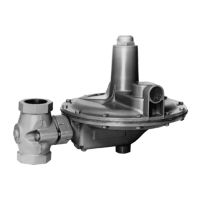personal injury and property damage
due to bursting of pressure-containing
parts. To avoid such injury and damage,
install the regulator in a safe location.
1. Use qualied personnel when installing, operating
and maintaining pilots. Before installing, inspect
pilot and tubing, for any shipment damage or
foreign material that may have collected during
crating and shipment. Make certain that body is
clean and the pipelines are free of foreign material.
!
WARNING
In hazardous or ammable gas service,
vented gas may accumulate and cause
personal injury, death or property
damage due to re or explosion. Vent
a regulator in hazardous gas service
to a remote, safe location away from
air intakes or any hazardous location.
The vent line or stack opening must
be protected against condensation
or clogging.
2. Pilots have a 1/4 NPT vent connection in the
spring case. To remotely vent gas from the spring
case, remove the screened vent and connect
1/4 in. / 6.4 mm piping or tubing. It should vent to
a safe location, have as few elbows as possible
and have a screened vent on its exhaust. Install
the regulator and any remote vent spring or tubing
so that the vent is protected from condensation,
freezing or substance that may clog it.
CAUTION
To avoid freeze-up because of pressure
drop and moisture in the gas, use
anti-freeze practices, such as heating
the supply gas or adding a de-icing
agent to the supply gas.
3. Run a 3/8 in. / 9.5 mm outer diameter or larger
pilot supply line from the upstream pipeline to the
lter inlet, bushing the line down to t the 1/4 NPT
lter connection. Do not make the upstream
pipeline connection in a turbulent area, such as
near a nipple, swage or elbow. If the maximum
pilot inlet pressure could exceed the pilot rating,
install a separate pressure reducing regulator in
the pilot supply line. Install a hand valve in the pilot
supply line and provide vent valves to properly
isolate and relieve the pressure from the regulator.
4. Attach a 1/2 in. / 13 mm piping or tubing
downstream control line to the 1/2 NPT control
line connection on the actuator casings. Connect
the other end of the control line to the pipeline
downstream of the regulator. Do not attach the
control line near any elbow, swage, block valve
or any other location that might cause turbulence.
Install a full port ball valve in the control line
to shut off the control pressure when using
the bypass.
Startup and Adjustment
Pre-Startup Considerations
Each regulator is factory-set for the outlet pressure
specied on the order. If no setting was specied,
outlet pressure was factory-set at the mid-range of
the pilot control spring. Before beginning the startup
procedure in this section, make sure the following
conditions are in effect:
• Block valves isolate the regulator
• Vent valves are closed
• A bypass, if any, is in operation
In all cases, check the control spring setting to make
sure it is correct for the application.
CAUTION
Be sure to slowly introduce pressure
into the system to prevent downstream
overpressure due to potential rapid
pressure increase. Pressure gauges
should always be used to monitor
downstream pressure during startup.
Procedures used in putting this
regulator into operation must be planned
accordingly if the downstream system is
pressurized by another regulator or by a
manual bypass.
Pilot Adjustment
For 161 Series pilots, remove the pilot closing cap
(key 16, Figures 4 through 6 or key 22, Figure 7)
and, on 161EB Series only, loosen the locknut
(key 12, Figure 4). Turn the adjusting screw (key 11,
Figures 4 through 6 or key 35, Figure 7) into the
4
161 Series
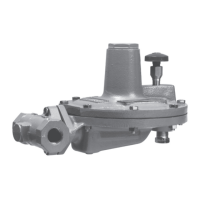
